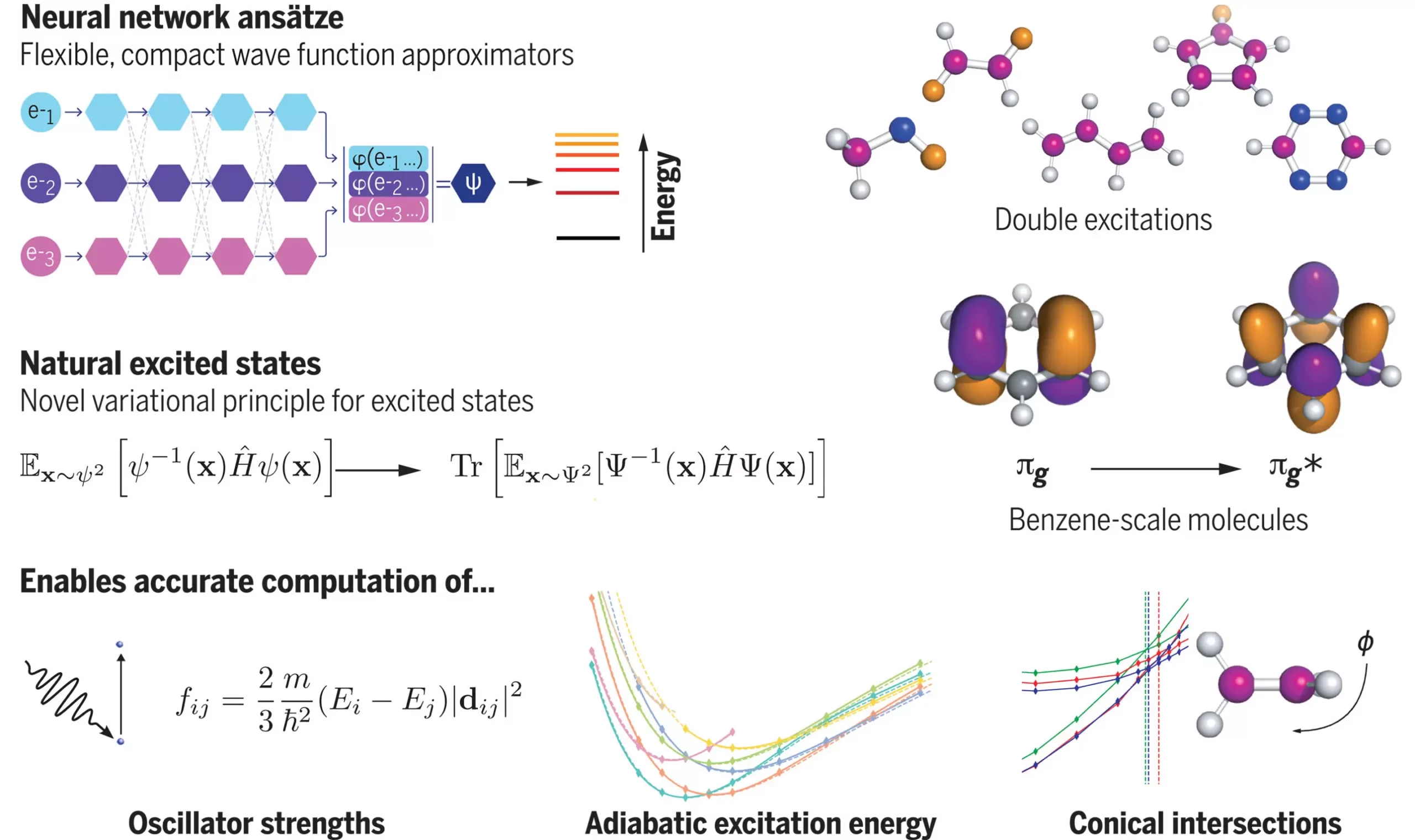In a groundbreaking new study published in Science, researchers from Imperial College London and Google DeepMind have presented a novel approach to modeling the states of molecules using neural networks. This innovative technique has the potential to revolutionize the field of computational chemistry and advance the development of new materials and chemical syntheses.
One of the key challenges in computational chemistry is understanding how molecules transition between different states, particularly when they are excited by external stimuli such as light or heat. These transitions result in changes in the electron configurations of molecules, known as excited states, which have a significant impact on the properties and behavior of materials. However, modeling these transitions accurately is extremely difficult due to the quantum nature of electrons and the probabilistic nature of their positions within molecules.
Lead researcher Dr. David Pfau highlights the complexity of representing quantum systems and the vast number of possible electron configurations that need to be considered. Traditional computational methods struggle to handle this level of complexity, which is where neural networks come into play. The team developed a new mathematical approach and utilized a neural network called FermiNet to compute the energy of atoms and molecules with unprecedented accuracy.
The researchers tested their approach on a variety of complex molecular systems, including the carbon dimer, and achieved remarkable results. The mean absolute error of their calculations was five times closer to experimental results than previous methods, demonstrating the effectiveness of neural networks in molecular modeling. This level of accuracy opens up new opportunities for researchers to design and prototype materials and chemical reactions using computer simulations before conducting experiments in the lab.
The ability to accurately model molecular states has significant implications for a wide range of technologies, from solar panels and LEDs to semiconductors and photocatalysts. Understanding how molecules behave at the quantum level can enhance the performance and efficiency of these technologies, leading to advancements in renewable energy, electronics, and materials science. Additionally, this research has the potential to shed light on biological processes that involve light, such as photosynthesis and vision, by providing new insights into the behavior of molecules in these systems.
The integration of neural networks into computational chemistry represents a major step forward in our ability to model and understand complex molecular systems. By harnessing the power of AI, researchers can overcome longstanding challenges in quantum mechanics and pave the way for exciting new discoveries in materials science and chemical engineering. The future of molecular modeling looks promising, thanks to the innovative work of scientists at Imperial College London and Google DeepMind.


Leave a Reply